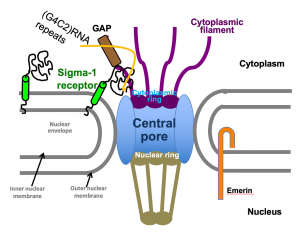 Hot Off the Press – February 9, 2021
Hot Off the Press – February 9, 2021
A receptor called the sigma-1 receptor, which was discovered at NIDA IRP, plays an important role in regulating the cargo transport between the cellular nucleus and cytoplasm that is dysfunctional in neurodegenerative diseases including amyotrophic lateral sclerosis (ALS) and frontotemporal dementia (FTD). The authors demonstrate and validate their findings in cellular and Drosophila models of ALS/FTD. Drugs that can cause an increase of the sigma-1 receptor in the brain may benefit the ALS/FTD patients.
Publication Information
Sigma-1 receptor chaperones rescue nucleocytoplasmic transport deficit seen in cellular and Drosophila ALS/FTD models Journal Article
In: Nature Communications, vol. 11, no. 1, pp. 5580, 2020, ISBN: 2041-1723.
